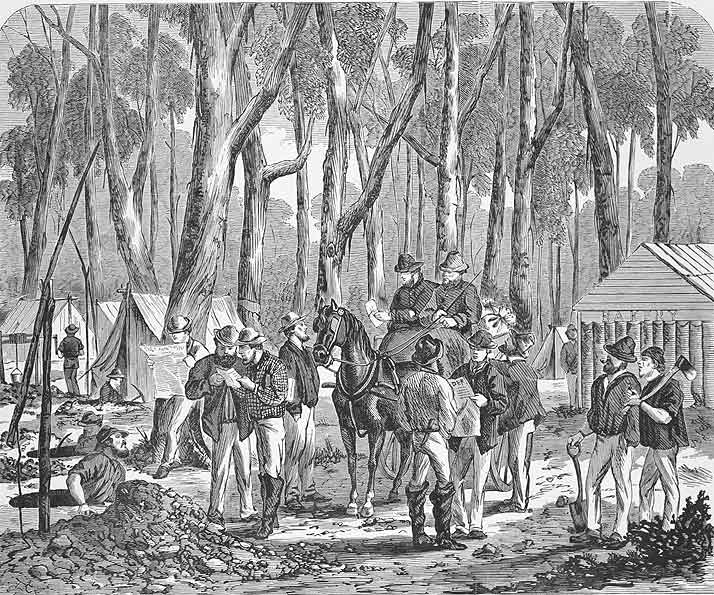 'Arrival of the mail, Myers Flat diggings', probably 1850s
'Arrival of the mail, Myers Flat diggings', probably 1850s
TLF ID R3297
This is a black-and-white print, measuring 17.7 cm x 21.6 cm, created from a wood engraving. It shows two men seated on a horse-drawn, two-wheeled buggy. Nine miners are gathered by the buggy, awaiting the delivery of letters, reading letters or newspapers and exchanging news. Although not visible on this image, the title 'Arrival of the mail, Myers Flat diggings' and the artist's initials 'T.C.' (Thomas Carrington) are inscribed underneath the picture.
